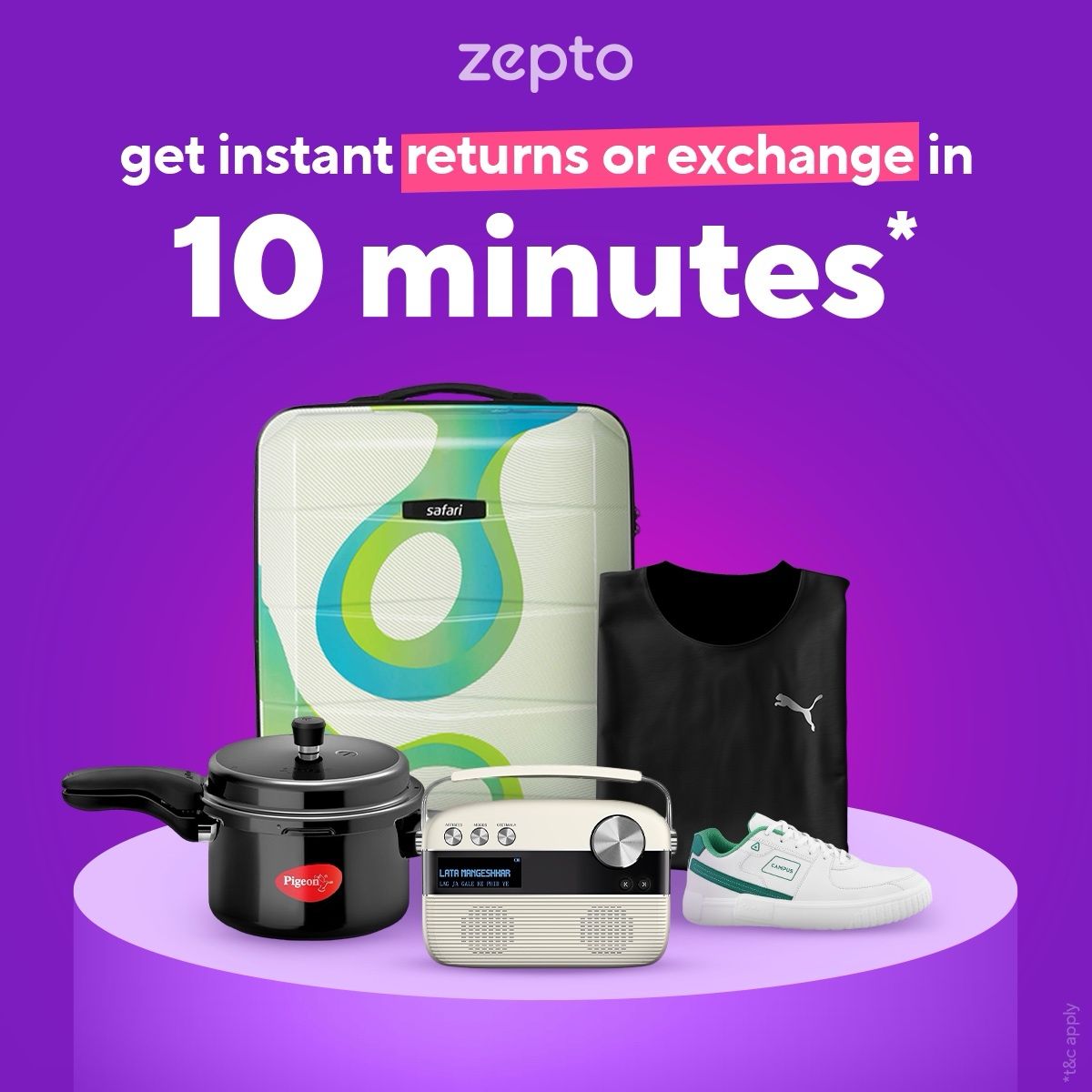



-Customers will be able to exchange or return orders within 1, 3, or 7 days, depending on the product category.
-In tandem with other launched services, exchange and return features are expected to give such platforms a competitive edge over traditional e-commerce platforms.
-Expedited return services could significantly increase these costs, especially in large, diverse markets where delivery and return networks need to be scaled rapidly.
Quick commerce unicorn Zepto has launched an instant returns and exchange feature on its app, the company announced in a social media post on Thursday. The feature will be available for select categories, including electronics, apparel, toys, sports, and kitchenware.
In a LinkedIn post, Zepto announced, "Now, return or exchange your Zepto orders in just 10 minutes." The move follows a similar feature introduced by its competitor Blinkit in categories such as footwear and clothing earlier this year.
Customers will be able to exchange or return their orders within 1, 3, or 7 days, depending on the product category. This new feature comes as Zepto expands its partnerships with major brands such as Levi’s, US Polo, and Decathlon.
As quick commerce companies broaden their portfolios to boost market penetration, exchange and return features are expected to give them a competitive edge over traditional e-commerce platforms.
While the introduction of quick return services within 10 minutes may offer a competitive advantage for quick commerce companies in India, it could also present several challenges that could become burdensome.
Operational Costs
Logistics Costs: Implementing a 10-minute return policy requires an efficient and rapid logistics system. According to a report by PwC, logistics accounts for about 13-15% of a retailer's total costs in India. Expedited return services could significantly increase these costs, especially in large, diverse markets where delivery and return networks need to be scaled rapidly.
Additional Workforce: To handle such a fast return process, companies will need to employ more delivery personnel or partner with logistics companies, which could increase costs further. India’s logistics sector is already facing a workforce shortage, with an estimated demand for 2 million skilled workers by 2025, creating both a challenge and a potential cost burden.
High Return Rates
Return rates for e-commerce in India have been on the rise, especially in categories including fashion and electronics. According to a 2019 report by TechSci Research, 30-40% of online fashion purchases in India are returned, which is higher than global averages. Implementing an instant return policy could further increase these rates, leading to higher reverse logistics costs and potential losses from returned products that can no longer be sold as new.
Fraud Risks
With faster return services, the potential for fraud or misuse increases. The rise in quick returns might tempt some customers to exploit the system, leading to higher costs related to processing fraudulent returns. In fact, according to a 2018 study by the National Retail Federation, $16 billion worth of returns in India were made fraudulently or falsely claimed, representing a significant cost to businesses.
Inventory Management Challenges
Managing returned goods effectively is another challenge. Quick returns require efficient inventory management systems to ensure that returned items are inspected, processed, and restocked quickly. However, with high return volumes, companies may struggle to maintain this pace, potentially affecting product availability and leading to overstocking or stockouts. This can also impact the supply chain, causing inefficiencies that lead to lost sales.
Technology and Infrastructure Investments
The technology infrastructure required to support instant returns is significant. Companies need to invest heavily in apps, customer service teams, and backend systems to track returns in real-time. For example, in a 2019 report, the Indian logistics sector was expected to spend INR 1.5 trillion by 2025 to modernize its infrastructure. Smaller companies, or those without the necessary infrastructure, might find these costs prohibitive.
While quick return services within 10 minutes could enhance customer experience, and could enhance platform choice, the increased operational costs, higher return rates, fraud risks, and the need for robust logistics and tech infrastructure could become burdensome for businesses going for quick return in India.


ⓒCopyright 2024 The CEO Post . All rights reserved